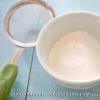How to change bulbs in an office ceiling light. Step-by-step instructions for replacing a fluorescent lamp. How the lamps are attached
Light bulbs are consumables that, depending on the quality of production and operating conditions, have a certain “lifetime”. This “life” ends the moment when, after turning on the lamp again, you are still standing in a dark or partially lit room. Sometimes you come across lamps that are so complex in design that replacing them becomes a whole undertaking. This is especially true for built-in LED and halogen devices with non-standard models.
In this article we will look at the types of sockets found in everyday life, as well as ways to remove various light bulbs from any lamp and replace them with new ones. Separately, it is worth considering the issue of replacing them in a suspended ceiling. We will also find out how to change a halogen lamp.
Types of socles
A socket is a thread or other type of connector with which a light bulb is attached to a socket or lamp. The base contains contacts that, when interacting with the contacts of the lamp, conduct current.
The following types of bases are found in everyday life:
- E27 is the most common type; it is screwed into almost all chandeliers and floor lamps. It has the form of a thread with a diameter of 27 mm.
- E14 is the second most common base, thread with a diameter of 14 mm. It is available in low-power models that are installed in floor lamps, bedside lamps, and wall decorative lamps.
- The picture below in the second row shows the bases of tubular fluorescent lamps found in long ceiling and wall lamps.
- In the third row you can see the bases of the light bulbs that are built into the ceiling lamp.

How to unscrew a light bulb with your own hands
Each type of fixture and lamp has its own replacement instructions, but the first steps are the same for all cases.
- Completely de-energize your home at the panel or meter. In this case, there is no need to worry about electric shock.
- To access tall chandeliers and spot lights on a suspended ceiling, find a stable stepladder or stool. When working with such fragile parts, you need to be sure of where you stand.
- We carefully stand on a stool (or remain on the floor if the light bulb can be reached without effort), working only with the switch off with dry hands.
- Further steps to replace lamps depend on their type. If these are threaded sockets, then with one hand we grasp the light bulb itself (attention, it may still be hot), and with the other we hold on to the socket. Using gentle movements, we begin to unscrew it counterclockwise. Do not squeeze the glass too hard - remember, it is thin. When unscrewing a halogen lamp, remove it only with clean and soft gloves.
- If the light bulb cannot be unscrewed, you need to try to loosen it, then it will give in.
- If it burns out because it burst, then unscrewing it will be quite difficult. How to change a broken light bulb in this case? There is nothing to grab hold of - only sharp shards of glass stick out from the cartridge. A regular potato will help you. Cut it in half, carefully place the cut on the protruding fragments, and then unscrew the remaining light bulb with gentle counterclockwise movements.

- Even if the fragments do not stick out, but the base is firmly seated in the socket, it can be unscrewed using an ordinary plastic bottle. Using a match or lighter, melt the neck of the bottle a little, and while the plastic is hot, insert it into the empty base. Wait a minute for the plastic inside to harden, then unscrew the rest. The E14 base can be removed using a wine stopper. This method is not suitable for replacing light bulbs in a suspended ceiling lamp.
- Long tubular fluorescent lamps have their own fixation method. To remove, grasp the body of the lamp with both hands and carefully rotate it along its axis in any direction. During the process, several characteristic clicks will be heard along the edges of the lamp - this is how it should be, these are the fasteners clicking. After turning approximately 45 degrees, the lamp contacts will appear along the edges of the mount, and it can be easily pulled out of the grooves.

- How to change a light bulb in a spotlight? With built-in lamps the situation is a little more complicated. The lamps are secured in them using special springs made of hardened metal. To interact with them, there are special levers on the body; by pressing them, you will release the light bulb from the mount, and it can be removed. The main thing is not to overdo it with pressing the levers - they are quite fragile, they are very easy to break. In addition, if you suddenly release the light bulb, it may slip out and fall to the floor, which will lead to the formation of a large number of dangerous fragments and damage to the floor covering - not the best way to replace a lamp in a suspended ceiling.
- If you can't find any levers, but you can grasp the device with your hands, try gently turning it 90 degrees counterclockwise. How to remove a spotlight? There are fasteners that, after turning the light bulb and making a quiet click, allow you to remove it. After removing the lamp, set it aside in a safe place.

How to install a new one
Installation is usually the exact opposite of removal in technology.
- Threaded versions are screwed into the cartridge clockwise until it reaches a sensitive stop. Do not screw too hard to avoid breaking the light bulb or cracking the socket. Halogen lamps are also replaced.
- Long lamps are inserted with contacts into the slots from which the old lamp was removed. After this, the lamp is rotated by hand along its axis 90 degrees until a characteristic click is heard.
- Light bulbs in ceiling and other built-in lamps are usually simply inserted back until the spring clicks; you do not need to press any levers for this. Using similar mechanisms, spotlights are replaced.
- After installation, make sure that the lamp is securely fastened in its socket and does not dangle in it; this is especially important when replacing it in a spotlight.
- Try turning on an LED or other installed lamp - be sure to turn away from it, and give the command “light” to everyone present so that they do not look either. Take care of your eyes when turning on new lamps - there have been cases when they, defective, burst the first time they were turned on.
Conclusion
Despite the abundance of models that can be found in everyday life, you can replace them all with your own hands. The main thing is to follow safety precautions both when removing the old lamp and when screwing it in. Be careful not to squeeze the glass or tamper with the delicate and fragile parts of lamps and halogen lamps - the damage caused may be hazardous to your health.
Before looking for the answer to the question - how to change a fluorescent lamp, it is necessary to determine what has burned out in it. The throttle, the starter and the lamp itself – the light source – can fail. To do this, you need to remove the external light diffuser (in some types of lamps) and examine all the components that make up it. If the throttle and starter have external deformations and emit the smell of burnt wiring, then they are out of order. The fact that the lamp will soon stop burning is indicated by the blackening of its edges.
What is needed for replacement
Screwdriver, current indicator, spare parts - the set of tools directly depends on the cause of the malfunction:
- throttle;
- starter;
- lamp (one or two).
Expert opinion
Alexey Bartosh
Specialist in repair and maintenance of electrical equipment and industrial electronics.
Ask a question to an expertBefore starting work, you must first disconnect the device from the power supply. Under no circumstances should you attempt to carry out any work under voltage. Without experience, you can get an electric shock. The consequences of an impact can be unpredictable.
When carrying out repair work, you need to use work gloves to avoid damaging your hands on the sharp edges of the lamp itself or the elements that make up it. All spare parts must be disconnected carefully so as not to damage the device - functional units.
Types of socles and their features
The base is an integral part of this lighting device, which is designed to ensure its fastening in the socket and the supply of electric current. Fluorescent lamps are equipped with the following types of base:
- E14. They call him a minion. It is threaded.
- E27. The base is medium in size. Like the previous one, it has a thread. The only difference is the size of the base.
- G5. Designed to equip a lamp with a bulb diameter of 16 mm.
Sequence of actions when replacing lamps
How to remove a fluorescent lamp? After the electrical appliance is disconnected from the power supply, you need to remove the reflector, if it is installed in a particular product. Next, turn the lamp clockwise and pull it out of the socket in which it is located. After this, you need to insert the new lamp into the connector intended for it and turn it in the opposite direction. After it is already in the lighting device, you need to check whether it works. If not, you can simply press it into the socket; perhaps there is no contact.
 How to properly remove a lamp
How to properly remove a lamp Recessed luminaires
Fluorescent lamps can be installed in different types of lighting fixtures. One of their most common types is built-in - they do not protrude above the load-bearing surface of the ceiling or wall; fluorescent lamps are installed inside the surface. They are used for arranging lighting in spacious rooms. These lamps are ideal for suspended ceilings. They can be easily and securely fastened.
All of them are equipped with special reflectors, which determine what the lighting in the room will be like, what light the device will emit and in what spectrum. They can be used to organize lighting for plants, providing them with the light radiation necessary for growth and development.
 Built-in fluorescent lamps in the kitchen set
Built-in fluorescent lamps in the kitchen set Surface-mounted lamps
They protrude above the load-bearing surface of the ceiling or wall - they are placed on top. These lamps are an ideal option for installation in entrances, corridors, apartments, warehouses and other rooms with limited space. Suitable for organizing lighting in rooms where the height of the walls reaches 4 meters.
Question:
Good afternoon, I have a suspended ceiling in my room, but the lamps in it have started to go out. I tried to pull it out myself, but I couldn't unscrew it. The canvas is deformed and the lamp cannot be pulled out. I'm afraid of damaging the ceiling. Tell me how to properly restore the backlight?
Answer:
Stretch and suspended ceilings are often used to decorate interiors and embody design ideas. The lamps that are installed in them are called point or “spot”, which is translated from English as “Point”. These can use both 12-24V lamps and the usual 220V. The design of the device, although standard, is installed in different sockets, and the lamps in them are also fixed in different ways. This approach helps to create a multi-zone ceiling light that is appropriate both in the home and in the office. Let's find out how to change a light bulb in a suspended ceiling without damaging it.
What kind of lamps are used in spotlights?
In stores you can find a whole range of products for spotlights; they differ in both voltage and design. When replacing a lamp, you need to pay attention to both factors:
- Supply voltage – 12, 24 or 220 V.
- Base type.
The 12V supply voltage allows the use of such lamps in any room, including wet ones - the bathroom and kitchen. The type of base already depends on the lamp itself; for spotlights there are quite a lot of them, among them the most common ones can be identified:
- GU5.3;
- GU10;
- GX53;
Generally speaking, they can be divided into two groups:
- Threaded base.
- Pin (the lamp must be inserted with or without rotation).
The last difference is the type of lamp:
- Incandescent lamp;
- Halogen;
- Luminescent;
- LED;
The last two types are usually called “Energy Saving”. Let's figure out how to change an LED and any other light bulb in a spotlight.
How to remove a light bulb from a suspended ceiling: 4 rules
 Layout of a spotlight in a suspended ceiling
Layout of a spotlight in a suspended ceiling Spots are not fixed in the suspended ceiling, but basically. Its frame is attached to the ceiling, and its decorative part is located on the tension fabric. The socket can either be fixed to the frame of the spot, or simply hang on a wire, and the lamp is fixed in the lamp; we will tell you more about this below. The main thing when replacing is to adhere to the following rules:
- Use a stable ladder or stand. This is mandatory, because You cannot rest your hand on the suspended ceiling, you will damage it.
- Wear gloves. Halogen lamps should not be touched with bare hands. If greasy marks remain on their surface, this can lead to premature failure of the lamp. It is worth thinking about replacing halogen with diode analogues.
- When servicing lamps of the MR16 type, you must carefully remove the stopper so as not to lose it, otherwise the lamp will fall out.
- Make no effort. You must remove the light bulb or the spot itself carefully so as not to damage the suspended ceiling or drywall; determine the type of lamp and read the instructions for replacing it.
Replacing MR16, GU5.3 lamps
 Layout of a spotlight with a GU5.3 base
Layout of a spotlight with a GU5.3 base Lamps for MR16 with GU5.3 base hold the lamp using a locking ring. It is less like a ring and more like a bracket. Let's find out how to remove a light bulb from a spotlight.
- Turn off the power. To avoid electric shock, it is better to turn off the electricity completely, because the switch does not always break the phase wire, although the correct circuit involves disconnecting the phase from the light bulb.
- If there is a decorative shade on the lamp, remove it.
- Squeeze the locking bracket with two fingers using the antennae provided for this purpose. Now you need to take it out. The removed stopper can easily jump out of your fingers, be careful.
- The lamp will hang on the wire; now you need to remove it from the socket, holding onto it. Do not pull on the wire to avoid tearing it off.
- Reassemble everything in reverse order and install the retaining ring in its place. Please note that there are grooves (windows) on the lamp body for this purpose.
There are some nuances. If the stopper does not sit in its place, this could be due to two reasons. The first is that the lamp was not inserted completely or its housing is not made to the standard. Secondly, perhaps the ring is not from this lamp; you could confuse them if you changed several lamps at once.
Instead of a spring stopper, there may be a threaded ring. We simply unscrew it and repeat the described steps.
Replacing lamps type GX53 (tablet)
 Layout of spotlight type GX53
Layout of spotlight type GX53 GX53s actually resemble a pill, they are usually round in shape with a white matte diffuser. Let's look at how to change gx53 light bulbs in a suspended ceiling. The procedure for replacing them is a little simpler than that of GU5.3. There are two pins on the lamp, but they are of a different shape. The pins have two diameters, the one closer to the lamp is smaller, and the one closer to the edge is twice as large. This is necessary to fix the light bulb in the socket. You don't have to disassemble anything here.
To replace this light bulb:
- Grasp the flask with one hand.
- Hold the frame of the lamp with your other hand.
- Turn the lamp counterclockwise 20 degrees.
- Pull out the lamp.
- Install the new one by turning it clockwise until it stops.
There is no need to remove the GX53 from the cartridge if it does not fit. The design allows for easy removal and insertion should be just as easy. It is fixed by turning and inserting the stops on the pins into a narrow place on the connector in the cartridge.
Replacing light bulbs with E14, E27 sockets
Bulbs with such sockets are less common in spotlights than pin ones, but still. They just need to be unscrewed and removed from the lamp. Now we will tell you how to change it in a spotlight. Depending on its design, there may be a locking ring, as described in the first type of lamp, or the lamp itself may be removed from the ceiling. On plasterboard ceilings, these are held in place by spring-loaded legs located opposite each other and spread in different directions under the action of a spring. You need to carefully remove the spot from the ceiling without damaging the latter, after which it will be convenient to unscrew the light bulb and screw in a new one. The stops, under the action of tension, will close towards each other and release the lamp.
Replacing a lamp in a suspended ceiling
The lamp in the suspended ceiling is fixed through plastic mounting rings. The spot itself rests on spring-loaded legs. The paws rest against the ring through the tension fabric. To remove such a lamp, do just two steps:
- Grasp the ring in the stretch ceiling with your hand, slightly resting on it.
- Pull the lamp body.
The springs will give in and the stops will come out of the ring.

The rings can be located on the reverse side of the tension film. Do not mindlessly pull on the body; do it with smooth but confident movements. Usually the wire to the cartridge is long enough and should not create obstacles.
We told you how to change an LED lamp in a suspended ceiling, now let's learn about some of the subtleties. Our tips will help you do this without damaging the wiring and ceiling covering, as well as quickly burning out the lamp.
- If a lamp burns out in the same place more often than others, the problem is in the socket. Pin sockets are not designed for high power, so it is better to use energy-saving lamps, then the socket will last longer, but if it is already damaged, replace the lamp or socket.
- Do not paw the flask - use napkins and gloves. In addition to visual defects, this can lead to burnout of halogen light sources, as we have already mentioned. Such lamps need to be handled with a napkin or with gloves; simple HB from a hardware store will do. If you don’t have them at hand, you can even use medical ones. A napkin will also help avoid problems. The last option is paper tape.
- If the lamp does not work, do not use force. It can stick to the cartridge, this happens due to power surges and overheating. Duct tape or paper tape will help. You can cover the protruding edge of the flask and pull the edge of the tape. This way you can apply more force without damaging the ceiling.
Errors
The main mistake is the use of powerful halogen lamps. For example, the GU5.3 base does not tolerate working with lamps over 40 W. To make the lighting brighter, add more lamps, or use LED or fluorescent fixtures. With the same power consumption, LEDs shine five or more times brighter. The price of LEDs has dropped significantly over the past five years, and the quality of the products has improved. They are suitable for both backlight and main lighting
If you already have high-power LED devices installed, try white lamps. Warm light visually seems dimmer and softer, although they provide the same luminous flux.
Video on the topic
To consolidate the material covered, we suggest watching a video with tips on replacing lamps in spotlights. In the first video, the author shows how to get the lamp itself; it clearly demonstrates the fastening mechanism.
The second video shows replacing the MR16 GU5.3 12V lamp from halogen to LED.
Svoboda Igor Nikolaevich
Reading time: 3 minutes
A A
The fluorescent lamp has gained popularity for its efficiency and a varied selection of shades of light. It has a long service life, which also ends. You need to know how to correctly install a new light source to replace a broken one, and what nuances are taken into account.
To update the luminaire, first determine the cause of the malfunction. The set of necessary tools for repair depends on this. One of the reasons could be:
- burnt out flask - a dark ring forms at the end;
- throttle malfunction;
- starter failure.
To replace a fluorescent light source you will need:
- screwdriver;
- current indicator;
- work gloves to protect hands from damage.
Expert opinion
Izosimov Vladimir Nikolaevich
Ask a question to an expertDo not carry out work under voltage. This is life-threatening. First disconnect the lighting from the power source.
Step-by-step instructions on how to replace a fluorescent lamp in a ceiling light
To change a burnt-out fluorescent lamp in a ceiling light:
- Provide access to the lamp by removing the shade or reflective grille. The lampshades are attached to the light source with screws or latches. Unscrew the screws and release the latch lock. Remove the lampshade or reflective grille.
- The lampshade is sometimes attached to the lamp itself. In this case, pull it and release the burnt out light source.
- Grab the flask with both hands and turn it 900 in any direction, remove it from the cartridge.
- Install the new lamp by doing everything in reverse order. Place the base into the socket, turning the bulb 900 in the opposite direction.
- To check the operation, turn it on.
If there is no glow, press the light source - there may be poor contact between the base and the socket.
How to remove, insert and assemble lamps with G5 and G13 sockets
Fluorescent light sources with G5 and G13 sockets are used in the kitchen, bathroom, and for illuminating mirrors. They are installed in ceiling lamps. Burnout is confirmed by a dark ring at the end of the flask. The cause of the malfunction may be a failure of the starter (ballast) or throttle.
To replace the fluorescent source:
- Relieve the voltage from the lamp. To be safe, turn off the power supply at the panel.
- Disassemble the lamp. Provide access to the bulb by removing the lampshade or reflective grille. The lampshades are attached to the light source with screws and latches. Unscrew the screws with a screwdriver or release the latch lock. Remove the lampshade or reflective grille.
- In single-lamp lamps, the shade is attached to the lamp itself. In this case, pull it and release the burnt out light source.
- To remove the flask, grab it with both hands and turn it around its axis 900 in any direction. The pins of the base will come out of the guide sockets in the socket.
- Pull the light source away from the fixture and out of the socket.
- Buy a new lamp. Its characteristics and dimensions must be the same as those of the burnt-out source.
- To install a new light source, place its ends into the socket until it stops, turn it at an angle of 900 in any direction until it clicks slightly. Lock the position.
Apply power to the lamp and check its operation. If the light is normal, replace the lampshade or grille. If the lamp does not light, turn it off and move the bulb in different directions for better contact with the cartridge. If there is no light, remove it and reinstall it.
If the measures taken do not lead to positive results, the starter or throttle may be faulty.
Expert opinion
Izosimov Vladimir Nikolaevich
Ask a question to an expertWhen working with the lamp, wipe off dust, clean the device from dirt and cobwebs. This will increase its reliability and service life.
How to unscrew in luminaires with modern types of bases G23, GX23
 Fluorescent light sources with G23, GX23 sockets are used in table lamps.
Fluorescent light sources with G23, GX23 sockets are used in table lamps.
They differ in the shape and size of the pins.
The mounting of the base and socket is the same as in other types, so the procedure for replacing a burnt-out lamp does not change.
For this:
- Turn off the power to the lamp by unplugging the cord from the outlet.
- Release the flask from the lampshade using the clamp. To remove, pull the edge of the bulb in the opposite direction from the lampshade and remove it from the lock. While shaking, pull away from the cartridge and pull it out.
- Go to the store with the old lamp and buy the same new one.
- Install the bulb into the lamp in the reverse order, inserting the base into the socket. Press the flask against the cartridge until it clicks.



















